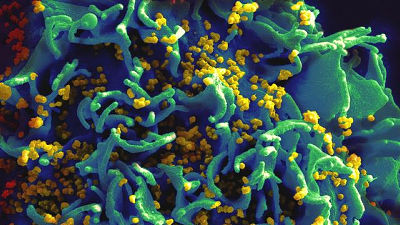'The nanoparticles that can be taken from squid ink' is effective for cancer

Squid ink is a black, highly viscous liquid that squid releases to escape from the enemy and is one of the essential ingredients for Mediterranean cuisine. An experimental result has been announced that the substance contained in such squid ink has an effect of treating cancer.
Nanoparticles from Cuttlefish Ink Tumor Growth by Synergizing Immunotherapy and Photothermal Therapy | ACS Nano
Cuttlefish ink found promising for cancer treatment
https://phys.org/news/2019-07-cuttlefish-ink-cancer-treatment.html
The research team of Pang-Hu Zhou et al., Who works for the Wuhan University People's Clinic in China, says in the article published in the peer-reviewed scientific journal ACS Nano , 'Natural nanoparticles obtained from squid ink treat cancer. It turned out that there are two effects of cancer immunotherapy and phototherapy, which are used to

by
Cancer immunotherapy is a type of cancer treatment that focuses on promoting the immune function of the human body. In research in this field, the immune cells, macrophages , M1 type, which can destroy cancer cells by cooperation with phagocytosis and T cells, suppress inflammation, suppress immunity, and promote tumor growth. It was known that there was an M2 type that would
Analysis of squid ink-derived nanoparticles named 'CINP' by the research team revealed that CINP has the ability to reprogram M2-type macrophages to M1-type by a method called MAPK signaling And.

by
In addition, the research team sprayed CINP onto cancer cells cultured in vitro and used near-infrared radiation to test its effect on photothermal therapy. As a result, about 90% of cancer cells were killed. The research team has succeeded in almost completely suppressing cancer cells even in experiments using mice. The research group said about this result: 'Because melanin, which is a black natural pigment that is also present in squid ink, efficiently converts light into heat, may it play an important role in the process of photothermal therapy?' I guess.
Cancer treatments using nanoparticles such as gold and graphene have been devised until now, but since complex manufacturing processes are required to synthesize nanoparticles, treatment using artificial nanoparticles is expensive. There was a drawback that it became a cost. Since CINP can be obtained from squid ink, it is low in cost, and is superior in that it exerts a synergistic effect combining two types of treatment.

by John Turnbull
'There are still many possibilities in the materials that can be obtained from nature,' said Xian-Zheng Zhang, co-author of the paper. The research team is currently not only squid ink, but also bacteria and fungi as well as hair and human bodies. We are looking for a treatment that uses the cells of
Related Posts:
in Science, Posted by log1l_ks







